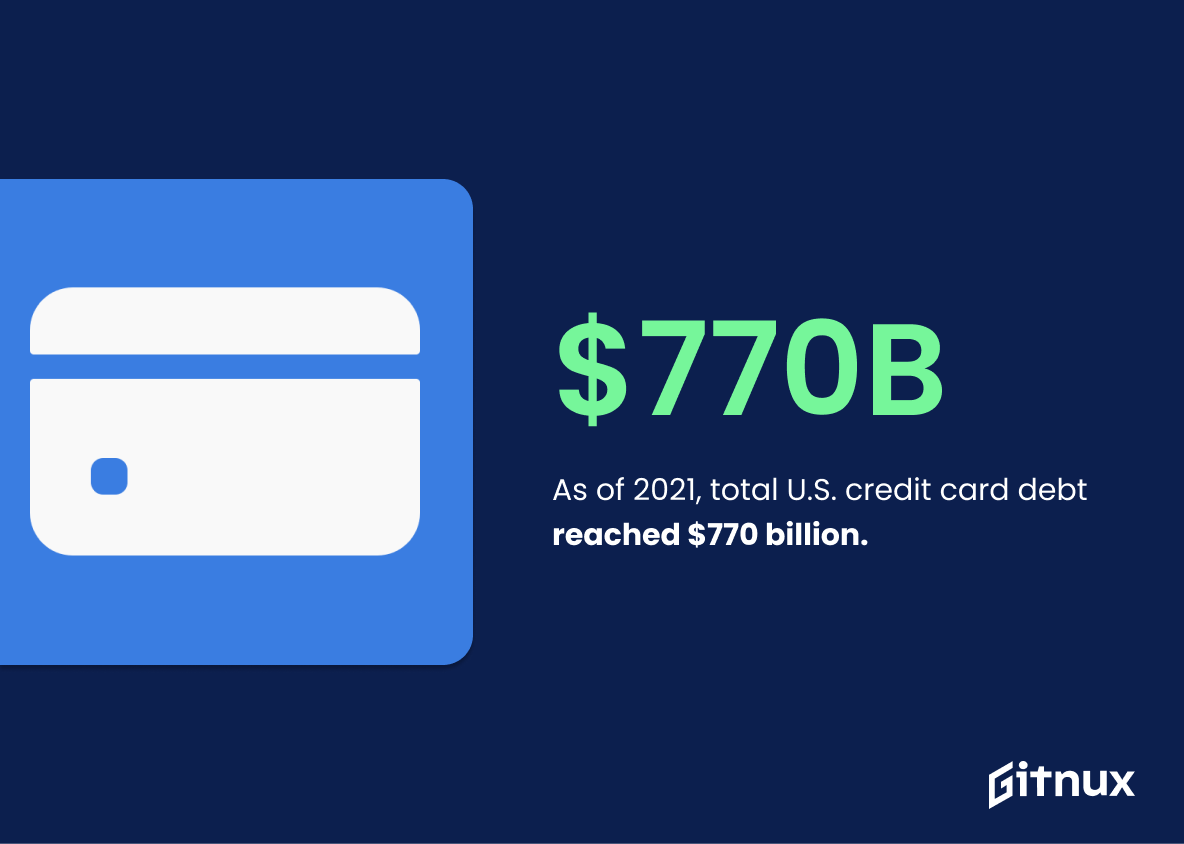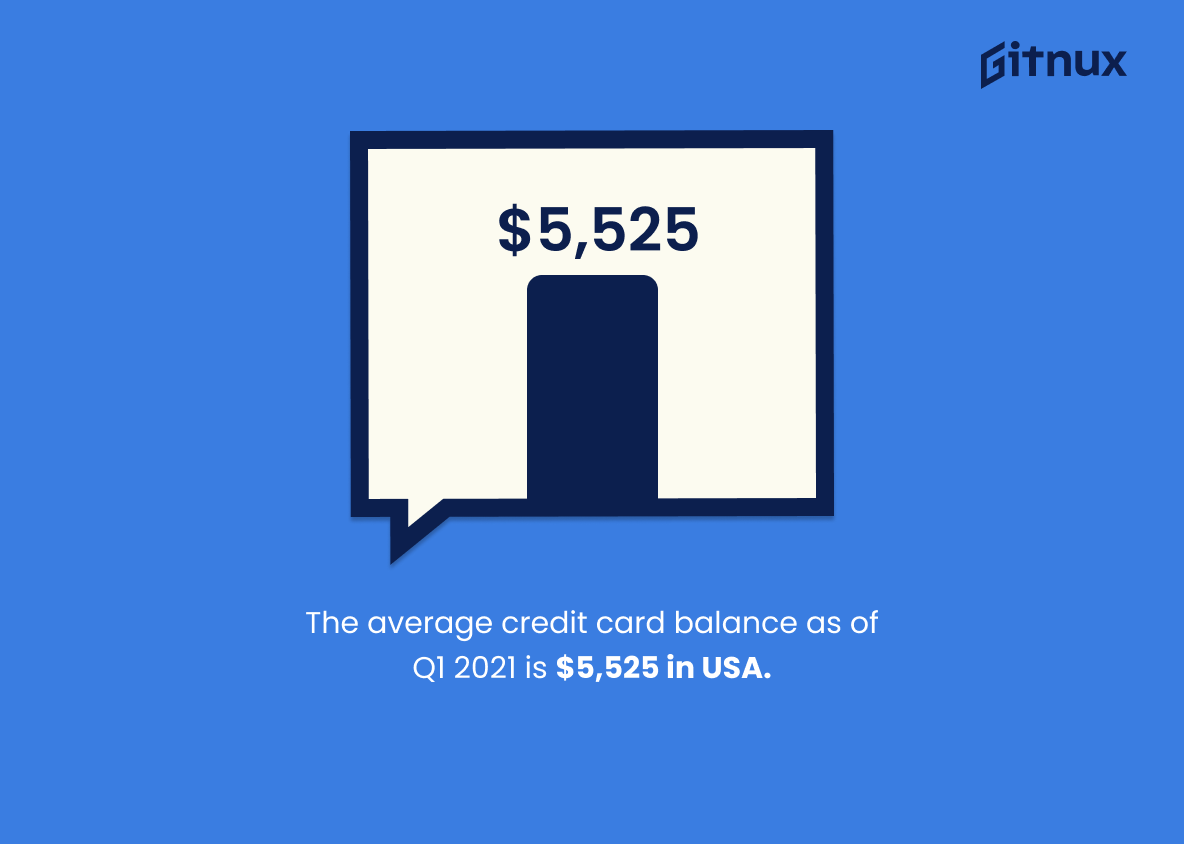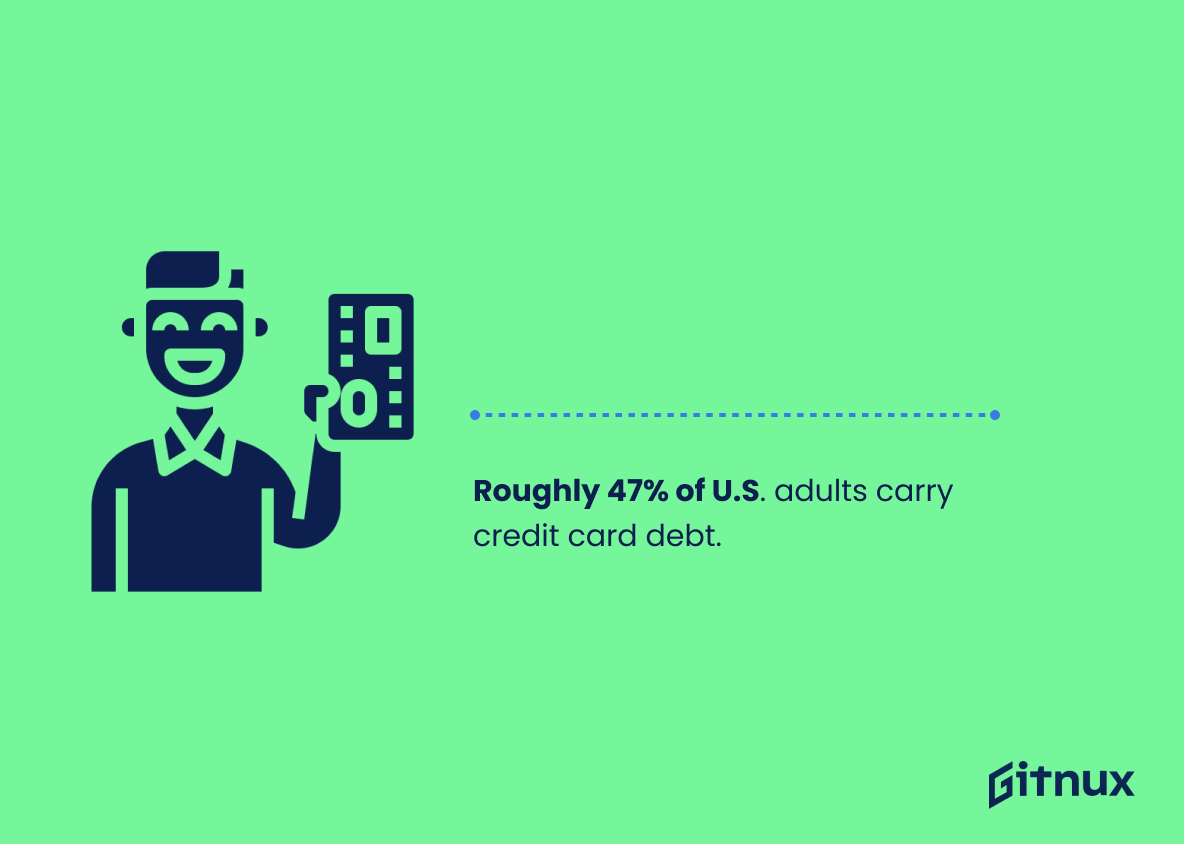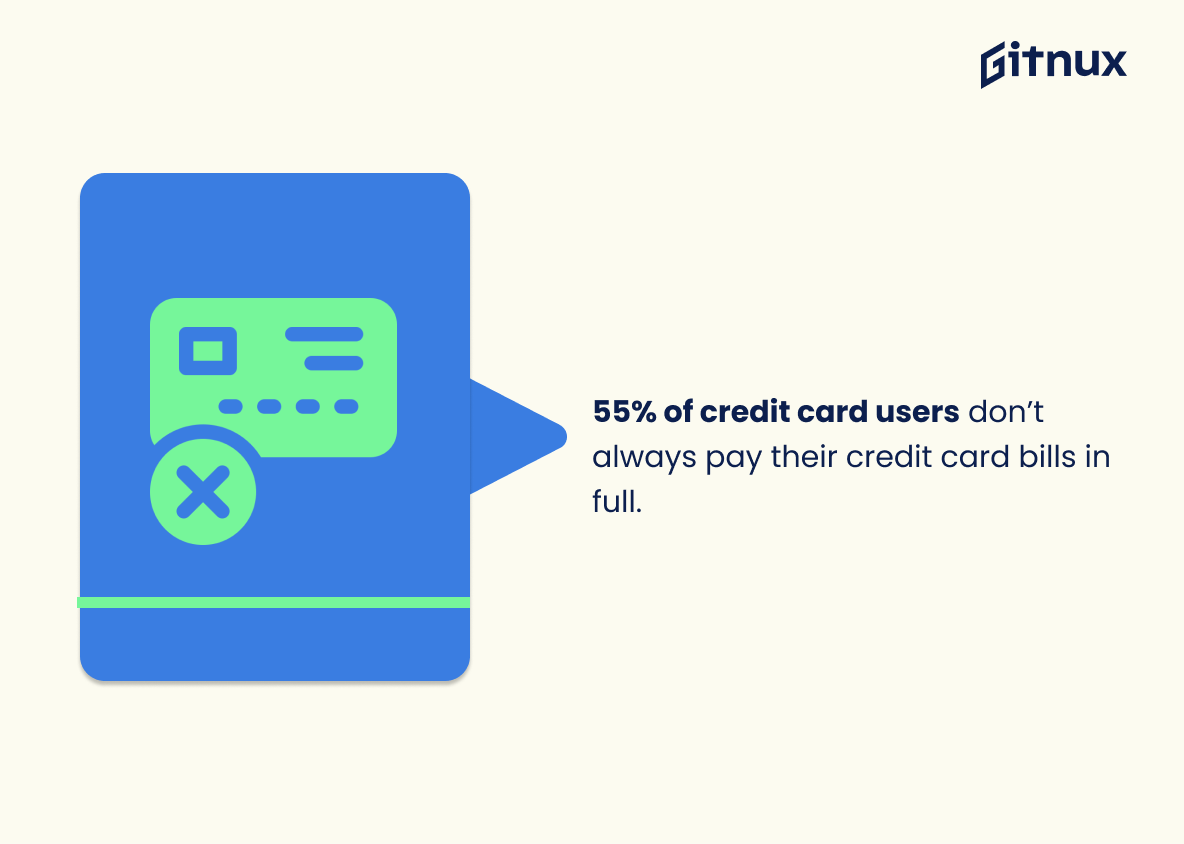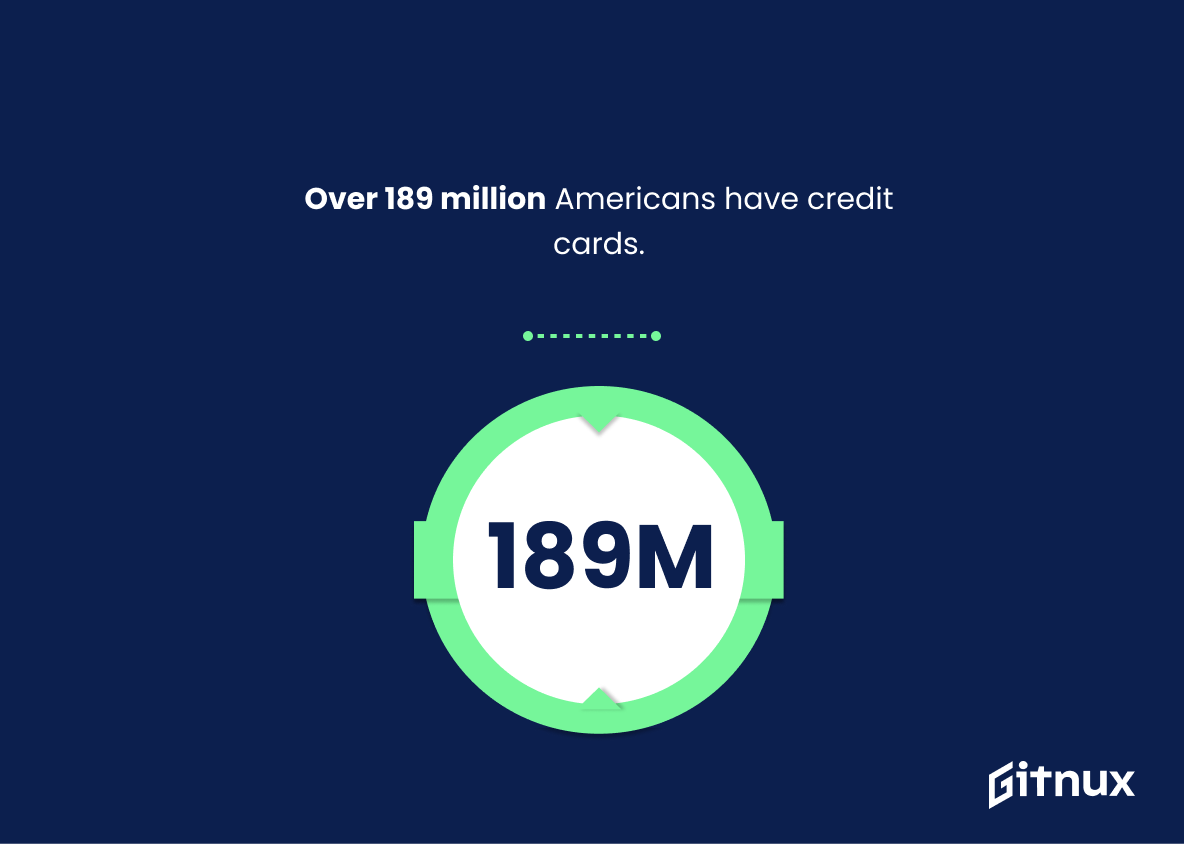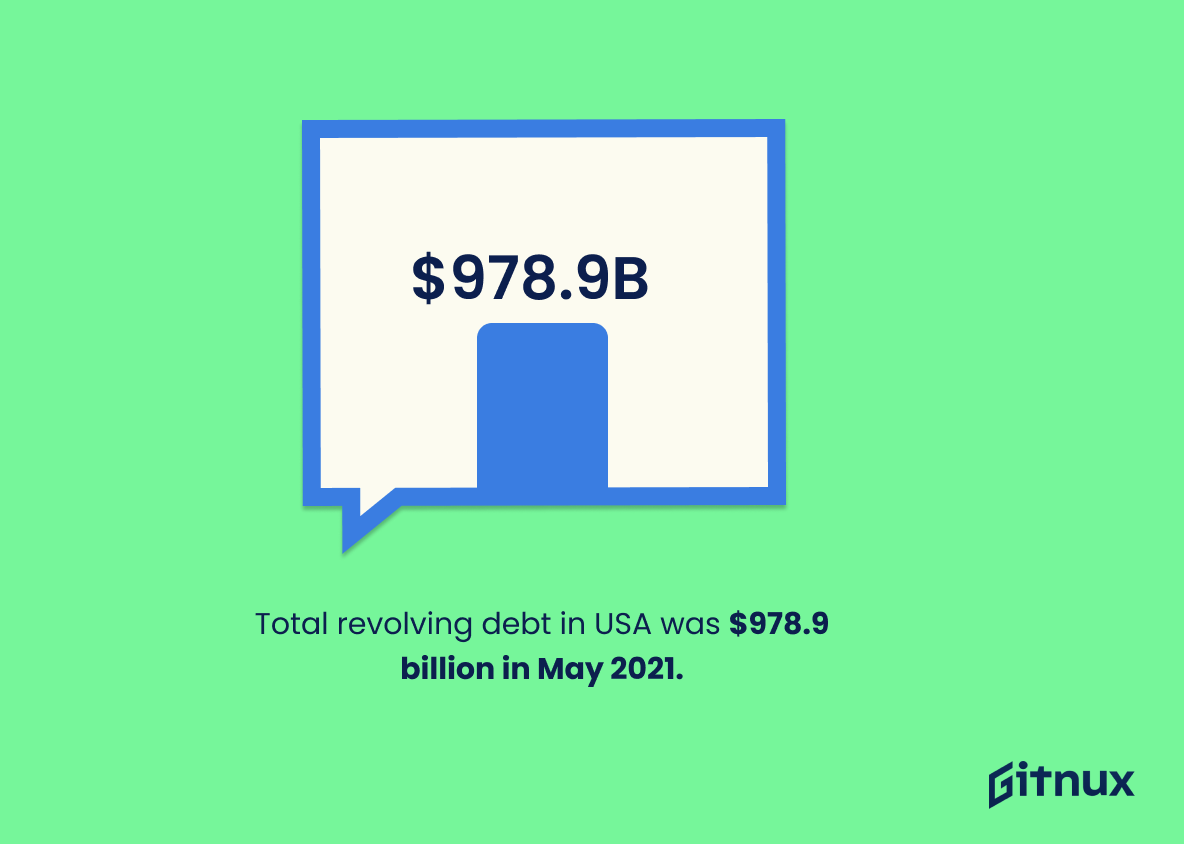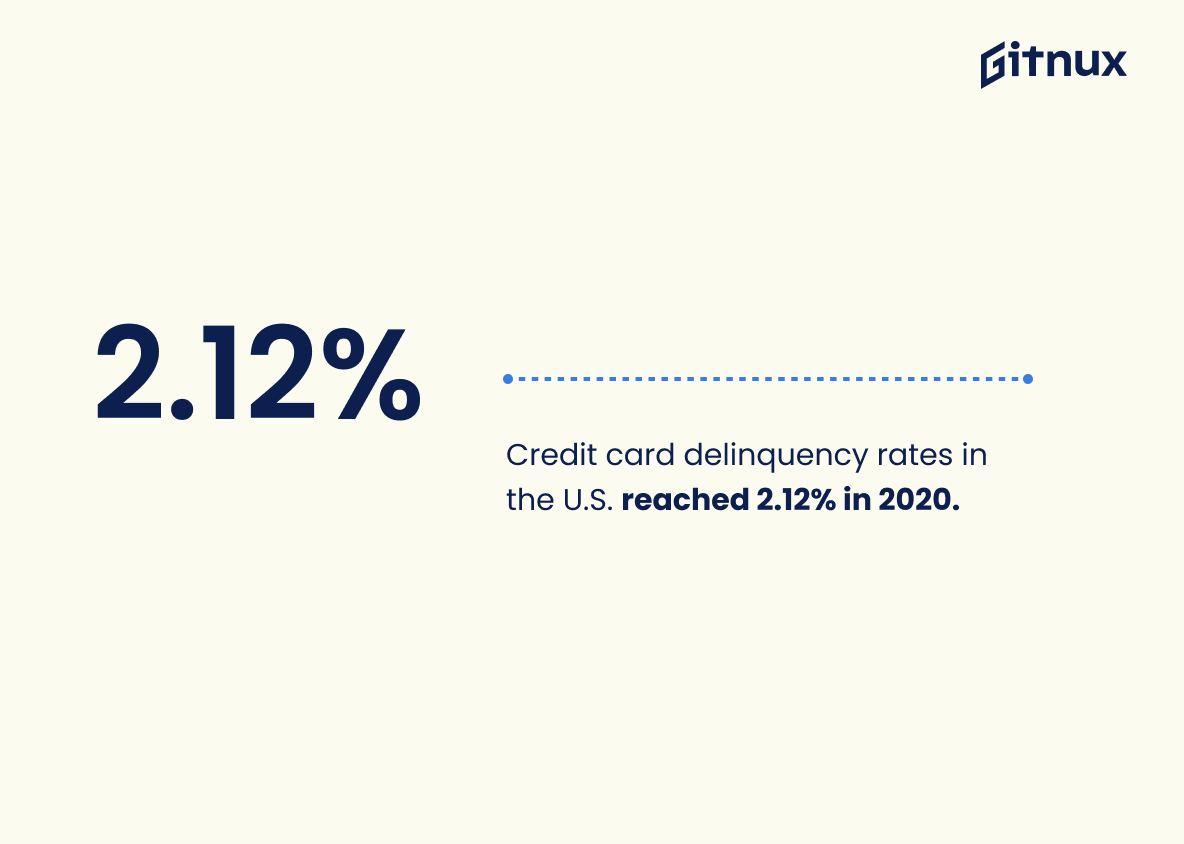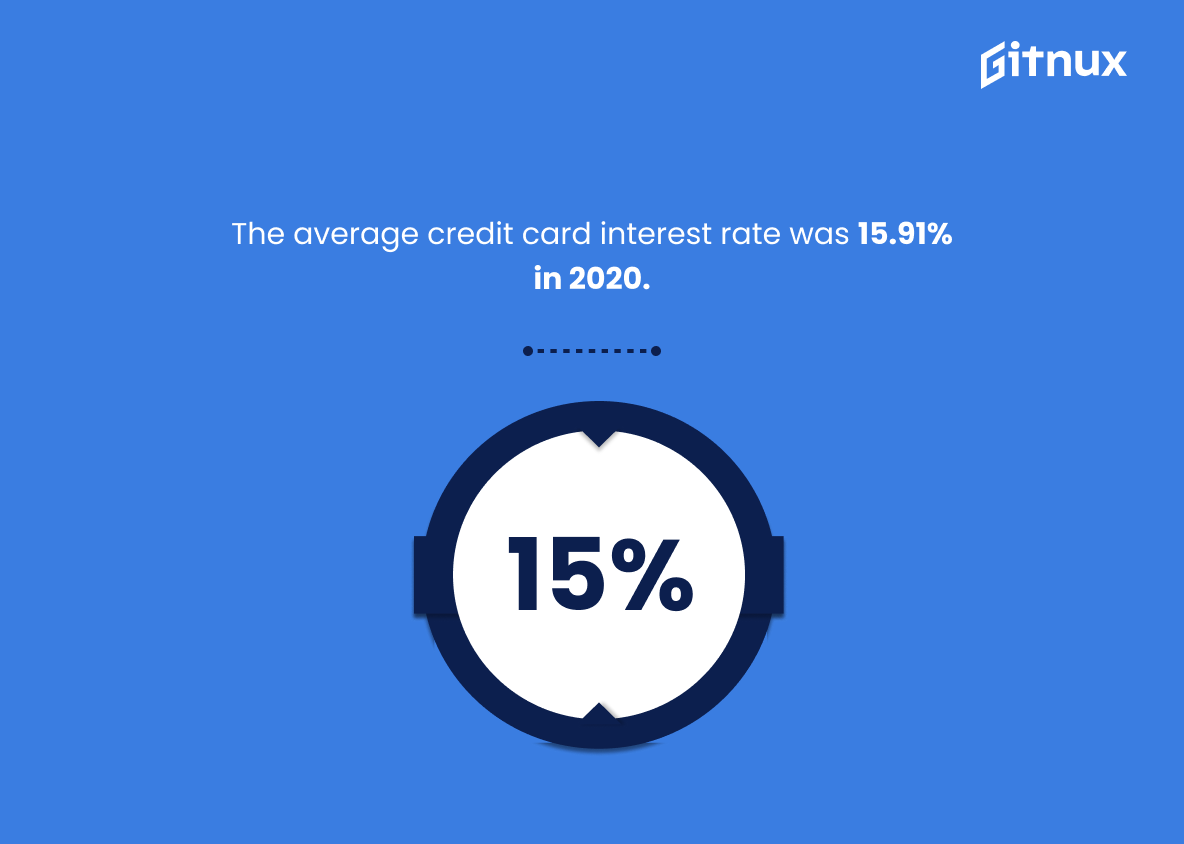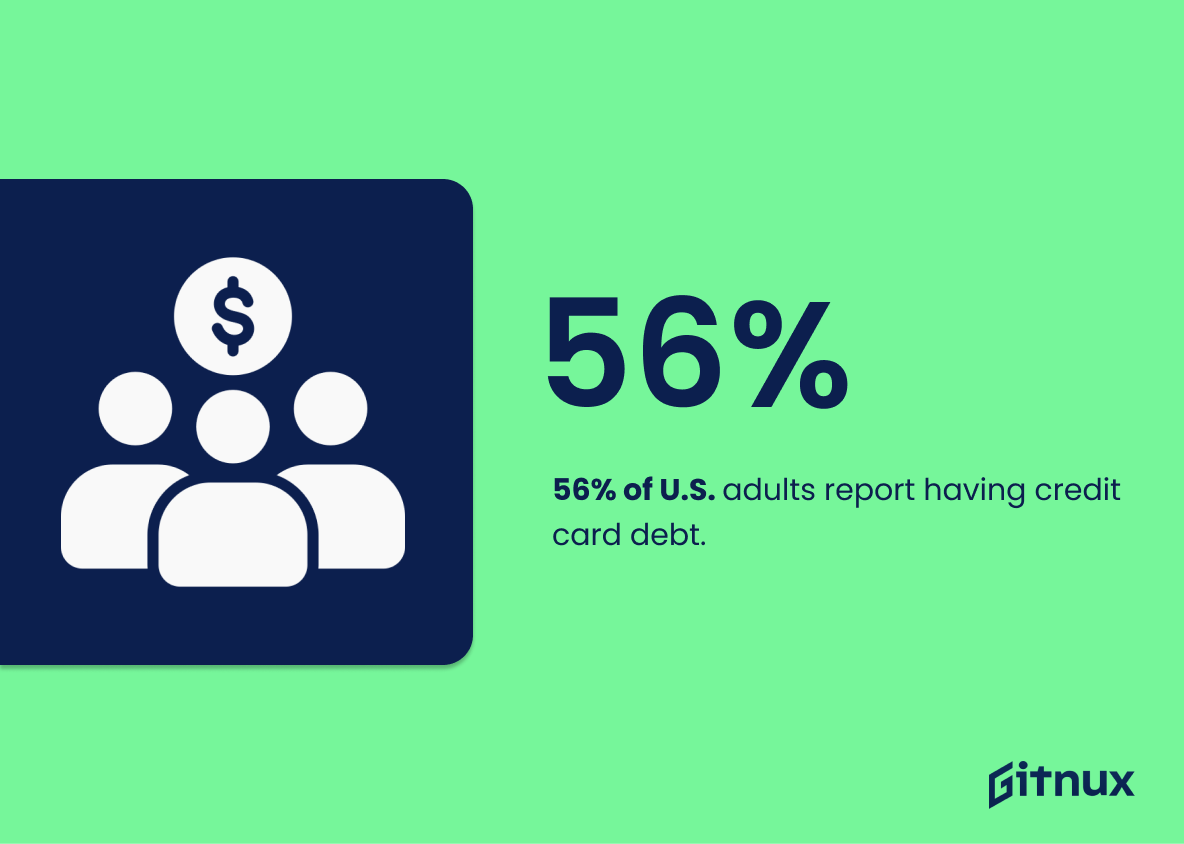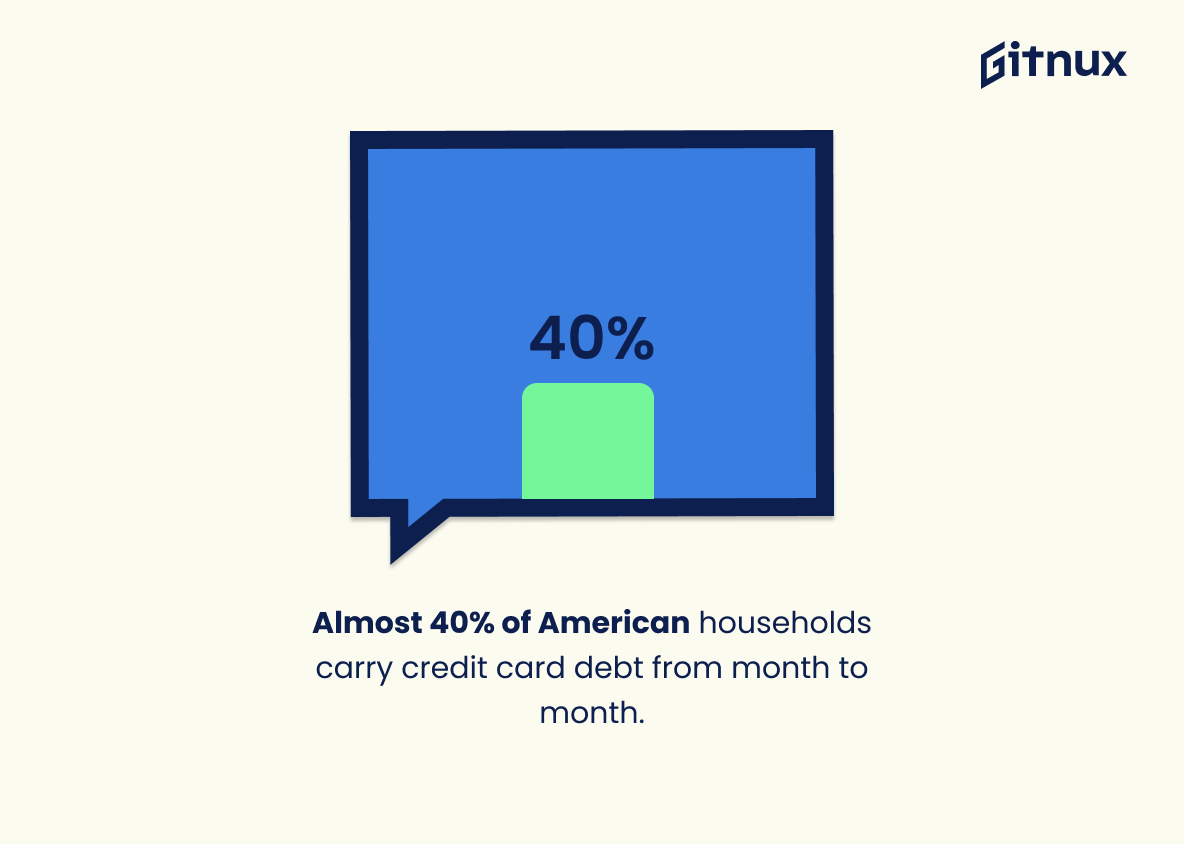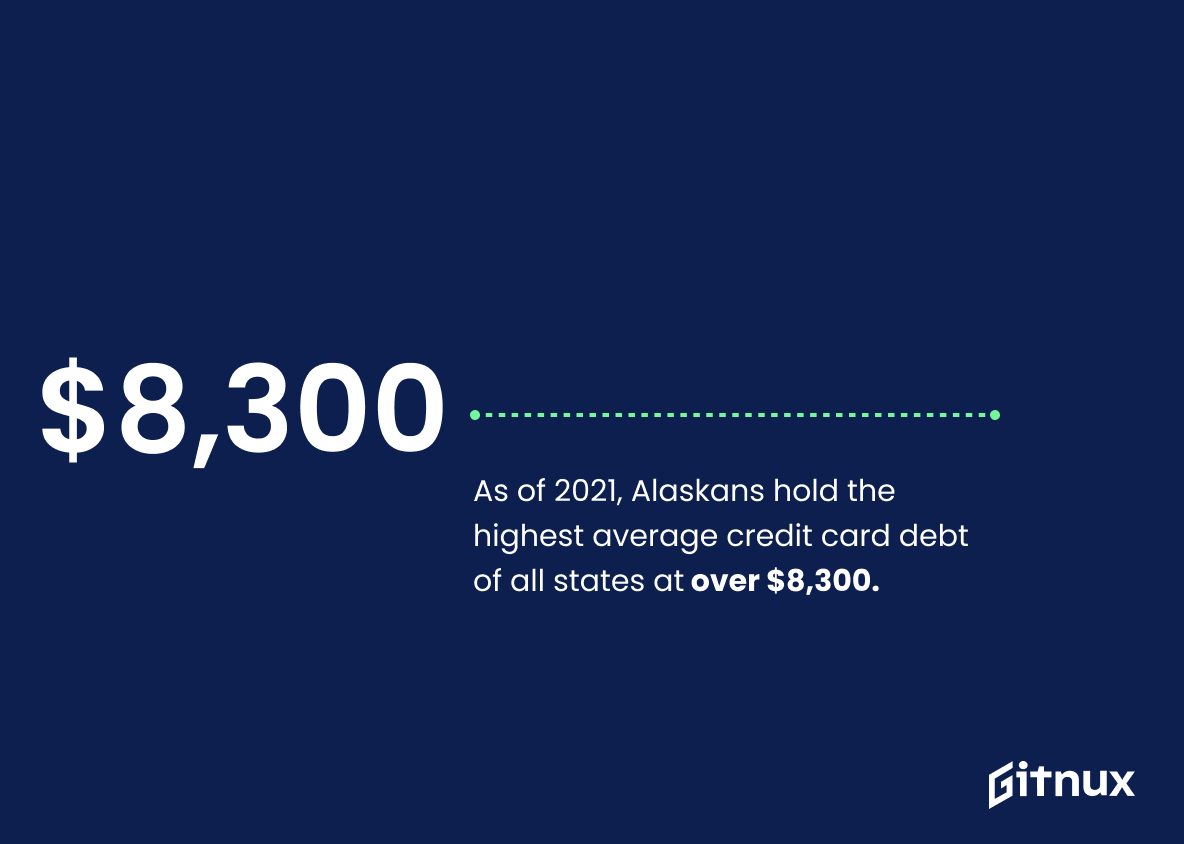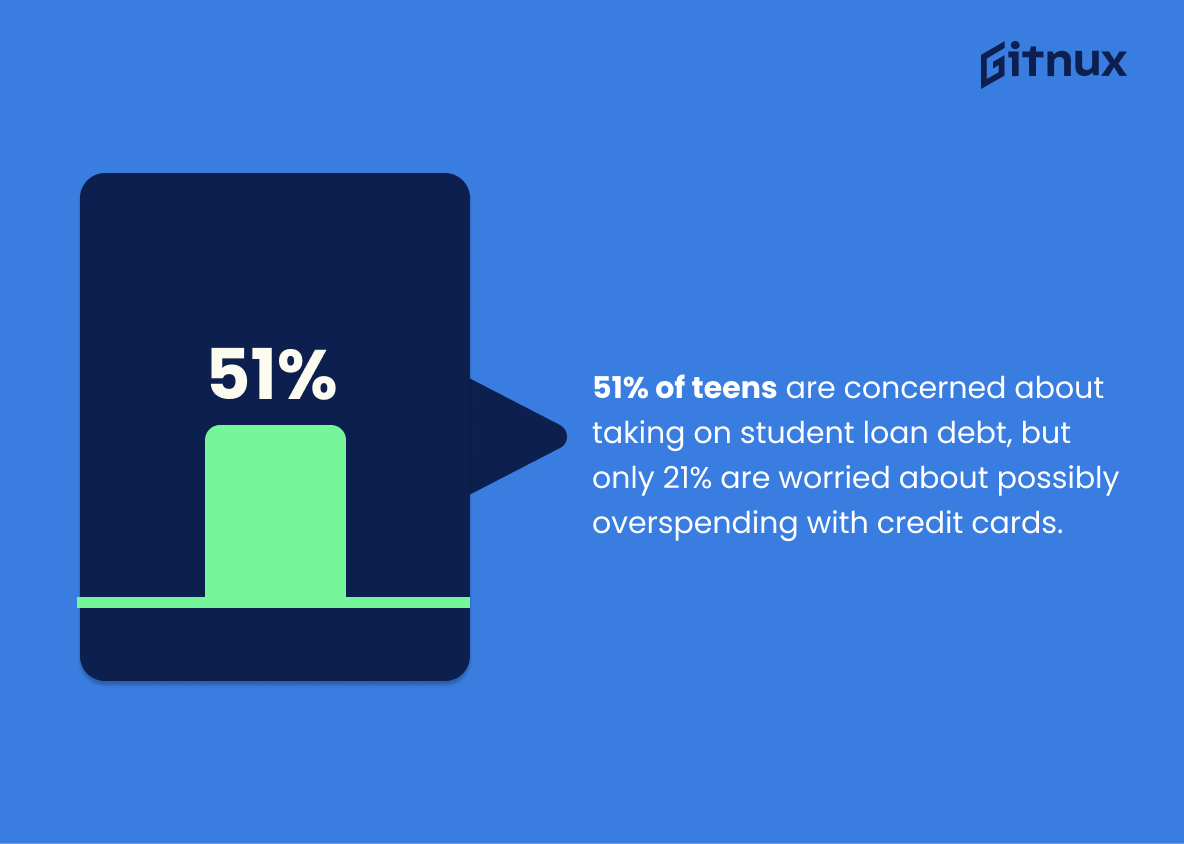In the modern world, credit cards have become an integral part of financial lifestyle, but with their convenience also comes a significant concern – debt. Understanding the wider perspective of credit card debt and its influence on consumers’ financial health is vital, whether you’re a finance aficionado, an economist, or an everyday card user trying to navigate responsibly. In this enlightening blog post, we will delve into the captivating sphere of credit card debt statistics. We’ll dissect the latest trends, the rising concerns, the demographic dependencies, and how these figures have changed over the years. Understanding these statistics will not only equip you with knowledge but may also help shape your approach to credit card usage. So, let’s plunge in and shed some light on what’s happening behind those shiny plastic cards in our wallets.
The Latest Credit Card Debt Statistics Unveiled
As of 2021, total U.S. credit card debt reached $770 billion.
In the tapestry of Credit Card Debt Statistics, the thread showing that “As of 2021, total U.S. credit card debt reached $770 billion” is a particularly impactful one. It stands as a towering testament to the widespread prevalence and vast scope of credit card debt across the nation, indicating the dire state of financial reliance on borrowed money. It subtly underscores the importance of debt management strategies for the average American and calls for more comprehensive financial education to preempt further escalation. This enormous figure, in essence, serves as a wake-up call—that the swirling vortex of credit card debt is not just an individual problem, but a national concern that warrants collective action and initiative.
The average credit card balance as of Q1 2021 is $5,525 in USA.
Shining a spotlight on the average credit card balance of $5,525 as of Q1 2021 plays a significant role in illustrating the credit card landscape in the USA. It serves as a key indicator of the financial habits of the general populace, allowing readers to benchmark their personal debt levels. Furthermore, the statistic provides central context by depicting the magnitude of affordability issues and potential financial stress that may ripple through the economy. By understanding where they stand in comparison to this average, our readers can more precisely evaluate their own credit card behavior and make informed decisions on managing their debt.
Roughly 47% of U.S. adults carry credit card debt.
Painting a vivid picture of the American credit landscape, the fact that approximately 47% of U.S. adults shoulder credit card debt serves as a compelling bellwether. This pressing figure underpins the urgency of the credit card debt discussion, ultimately amplifying the significance and relevance of our blog post centered around Credit Card Debt Statistics. This stark reality underscores the commonality of credit card debt, shedding light on the prominence of this issue amidst the adult population. Beyond simply humanizing abstract figures and percentages, it tangibly elucidates the scale, scope, and gravity of the credit card debt saga we are currently writing.
55% of credit card users don’t always pay their credit card bills in full.
Exploring the intriguing realm of credit card debt, it’s a must to consider one compelling figure: over half of all credit card users – a significant 55% – do not consistently settle their bills in full. This nebulous cloud hanging over a considerable majority brings into sharp relief the ongoing struggle faced by many amidst the swirling storm of debt.
When a blog post delves into Credit Card Debt Statistics, such percentages aren’t just mere figures, but pivotal markers that reflect the prevailing payment patterns. They shed light on the financial habits shaping our society, particularly underscoring the pitfalls that prompt people’s plunge into the perpetual cycle of debt.
Such a statistic is a beacon, jolting us to take a harder look at decisions related to credit card management and the snowball effect when bills aren’t paid off completely. Acknowledging the considerable number of users who only repay the bare minimum or a fraction of their balance tells a tale of financial stress, risk, and the potential for accruing high-interest debt. This is a numerically expressed portrait of a society wrestling with financial decisions and the subtext of a larger narrative on sustainable financial habits, illuminating the need for better financial education, planning, and management.
Over 189 million Americans have credit cards.
In a landscape where over 189 million Americans are armed with credit cards, a panorama of potential debt looms ominously. This figure paints a riveting canvas of financial breadth and depth, highlighting the widespread usage of plastic power. When assessing credit card debt statistics specifically, this number delineates the sprawling terrain in which debt can thrive, proving a crucial keystone in understanding the magnitude and scale of debt conversations taking place across the United States. Comprehending the immense user base is instrumental in evaluating the potential debt vortex and its ripple effects on the economy and individual financial health.
The average U.S household debt is $7,104 on credit cards.
In the narrative of Credit Card Debt Statistics, the data point revealing that the average U.S household owes $7,104 on credit cards serves as a significant cornerstone. It paints a vivid picture mirroring the financial reality that countless American households grapple with, providing an invaluable frame of reference that justifies an in-depth exploration into the blog topic. This statistic is the heart of our discourse, offering insight into the magnitude of credit card debt and driving home the urgency of finding effective strategies to alleviate this economic stressor.
Total revolving debt in USA was $978.9 billion in May 2021.
The colossal figure of $978.9 billion as the total revolving debt in the USA, recorded in May 2021, builds an edifice of discernment in assessing credit card debt statistics. It serves as a vibrant brushstroke on the canvas of America’s financial landscape, reflection and potency of plastic money, and its adoption among consumers. These figures are a double-edged sword, revealing both the financial autonomy credit cards provide and the potential pitfalls of indebtedness for the unwary. They ink the narrative surrounding financial prudence, credit utilization, and the economic health of the nation, thus playing a pivotal role in the discussion about credit card debt statistics.
Credit card delinquency rates in the U.S. reached 2.12% in 2020.
Diving into the heart of Credit Card Debt Statistics, the figure ‘Credit card delinquency rates in the U.S. reached 2.12% in 2020’ serves as an ominous flag on the financial landscape. This percentage paints a vivid picture of the financial tightrope many Americans are walking. It underscores the magnitude of the challenge faced by a significant proportion of U.S. consumers, as they grapple to meet their credit obligations amidst fluctuating economic circumstances. Furthermore, it also casts light on the potential risk exposure for credit card issuers, who may face an increase in default rates. Taken together, these aspects contribute towards a comprehensive elucidation of the state of credit card debt, thus enriching our understanding of this complex issue.
Among adults with credit cards, a quarter of them have added to their credit card debt during the COVID-19 pandemic.
Navigating the tumultuous seas of the current pandemic, it’s crucial to shine a beacon on our journey towards financial stability. The statistic that a quarter of adults with credit cards have accumulated more debt during the COVID-19 pandemic serves as a pivotal lighthouse in our discussion. It activates a keen interest, revealing the tangible impact of a global health crisis on personal finance. From the perspective of a blog post about Credit Card Debt Statistics, this figure is akin to a plot twist, adding depth to the narrative by highlighting the changing trends and pressure points in consumer behavior. It underlines the magnitude of pandemic-driven financial stress mirrored in spending habits, painting a clear picture of the reality many people face, thus warranting readers’ urgent attention. Moreover, this statistic sets new directions for solutions and suggestions, and better equips us in forging a path towards credit control and financial wellness.
The average credit card interest rate was 15.91% in 2020.
Reflecting on the statistic in the context of Credit Card Debt Statistics, one cannot overlook the telling tale of the average credit card interest rate standing at 15.91% in 2020. This critically acts as a measuring rod of the costs consumers are liable to bear when they borrow via credit cards. It outlines the financial burden on cardholders, especially those unable to pay off their entire balance in each billing cycle, leading to accrued interests. Additionally, this figure serves as a indicator to benchmark different credit card options, and wisely select one to avoid being swept away by the tide of unsustainable debt.
56% of U.S. adults report having credit card debt.
Giving a revealing glimpse into the monetary habits of U.S. citizens, the figure that 56% of adults carry credit card debt serves as a powerful testament to the pervasiveness of this issue. Unpacking its scope within a blog post on credit card debt statistics does more than simply define; it illuminates the vast landscape of financial challenges many Americans routinely navigate. Vibrant in its implications, this statistic exhales into the ebb and flow of America’s economic currents, underscoring the resilience people must muster in the face of potential fiscal adversity.
Almost 40% of American households carry credit card debt from month to month.
In painting the canvas of credit card debt statistics, the hue of ‘Nearly 40% of American households carrying credit card debt from month to month’ truly stands out. It casts a striking spotlight on the pervasiveness of this issue across the country. Through this figure, we’re offered a glimpse into millions of homes continually wrestling with debt, engraving a narrative of financial strain realized on a monthly basis, underpinning the scale of the burden that credit card debt imposes on the American population. Furthermore, it serves as a compelling reminder of the gravity and extent of credit card dependency in household economies. Finally, the 40% watermark acts as a strong indicator for policy makers and finance experts looking to understand, manage, and, ideally, reduce the impact of credit card debt on American families.
As of 2021, Alaskans hold the highest average credit card debt of all states at over $8,300.
Drawing attention to Alaska’s skyrocketing average credit card debt of over $8,300, a towering figure that surpasses all other states as of 2021, casts a startling illumination on the overarching narrative of credit card debt spread across the United States. Viewing the situation through the prism of the Alaskans’ financial predicament enriches our understanding of the magnitude and gravity of credit card debt and underpins the necessity for strategic action and financial education. Furthermore, it acts as a pivotal reference point for readers, fostering a comparative analysis of the credit card debt landscape across states. In doing so, it helps to dissect the deeper socio-economic factors driving such disparities, which is particularly insightful for policy makers, economists, financial advisors and individuals alike, and aligns seamlessly with the profundity conveyed by the blog post.
51% of teens are concerned about taking on student loan debt, but only 21% are worried about possibly overspending with credit cards.
The intersection of these percentages paints a fascinating picture of the modern financial worries of teenagers. On one hand, over half of this demographic is fretful about student loans, a sign that the anxiety surrounding the current education debt crisis has filtered down to our youth. Yet, on the flip side, less than a quarter seems appreciably worried about overspending through credit cards, a potential gateway to enduring debt early in life. This dissonance not only gives us valuable insights into intuitive risk perception among teens but also highlights a critical area for financial education. Addressing this imbalance in monetary apprehensions could undoubtedly foster better-informed decisions, ensuring our youngsters grow into fiscally responsible adults. In the grand scheme of credit card debt statistics, such trends showcasing youthful concern (or lack thereof) can be the indicators we need to sculpt effective financial literacy programs.
Conclusion
Navigating through the labyrinth of credit card debt can often be overwhelming. The statistics we’ve uncovered reveal the magnitude of this issue, which affects millions of people across the globe at various levels. These facts are more than mere numbers; they reflect the deep-seated financial struggles of today’s society. However, armed with this knowledge, we can better comprehend the dynamics of credit card debt, thereby cultivating healthier financial habits. Moreover, this understanding can guide lawmakers and financial institutions to devise new strategies and policies directed towards alleviating credit card debt. Remember, while credit cards can be convenient, they must be used judiciously to avoid falling into the debt trap.
References
0. – https://www.www.nerdwallet.com
1. – https://www.www.statista.com
2. – https://www.www.juniorachievement.org
3. – https://www.www.bankrate.com
4. – https://www.www.insider.com
5. – https://www.www.debt.com
6. – https://www.www.creditcards.com
7. – https://www.www.creditkarma.com
8. – https://www.www.federalreserve.gov
